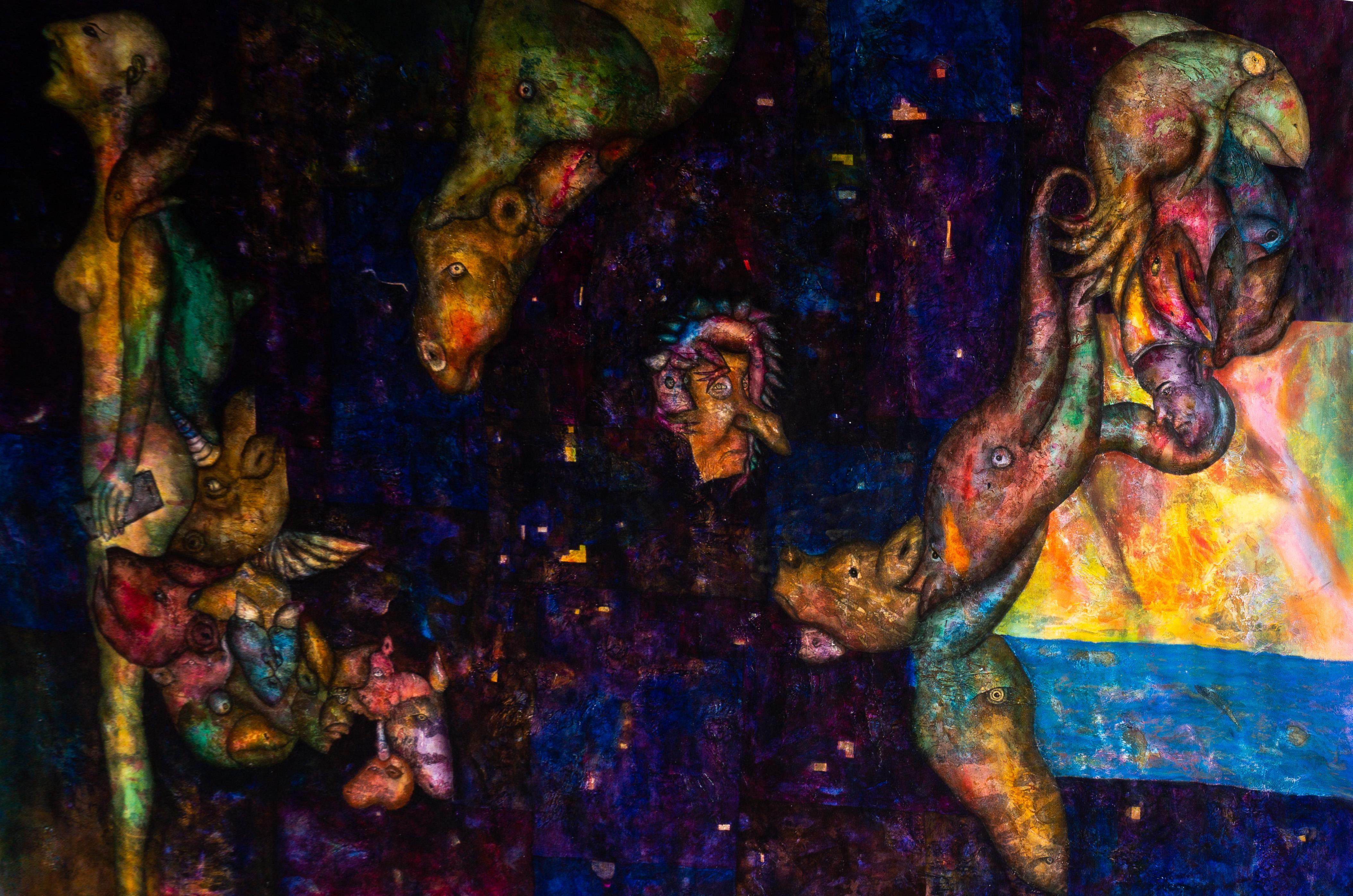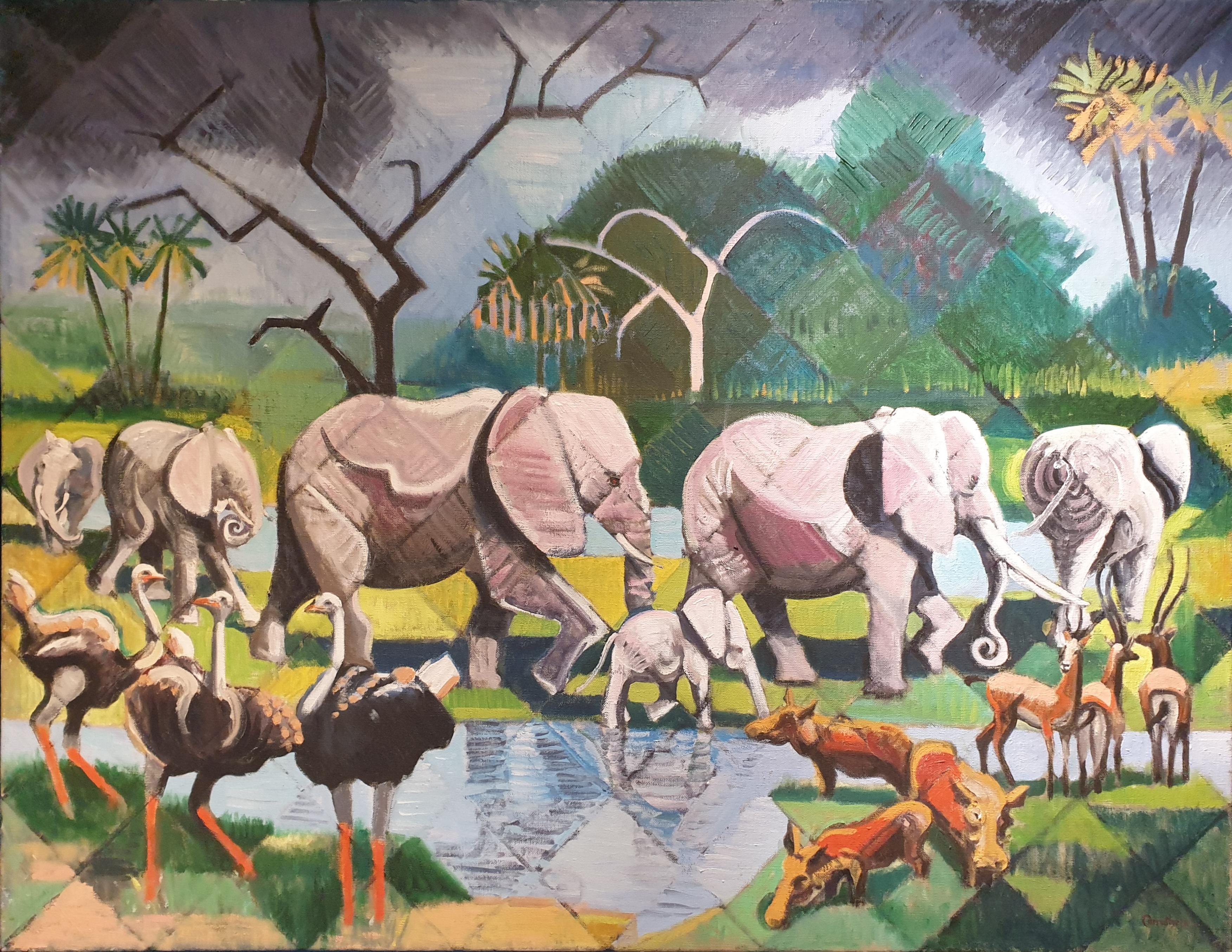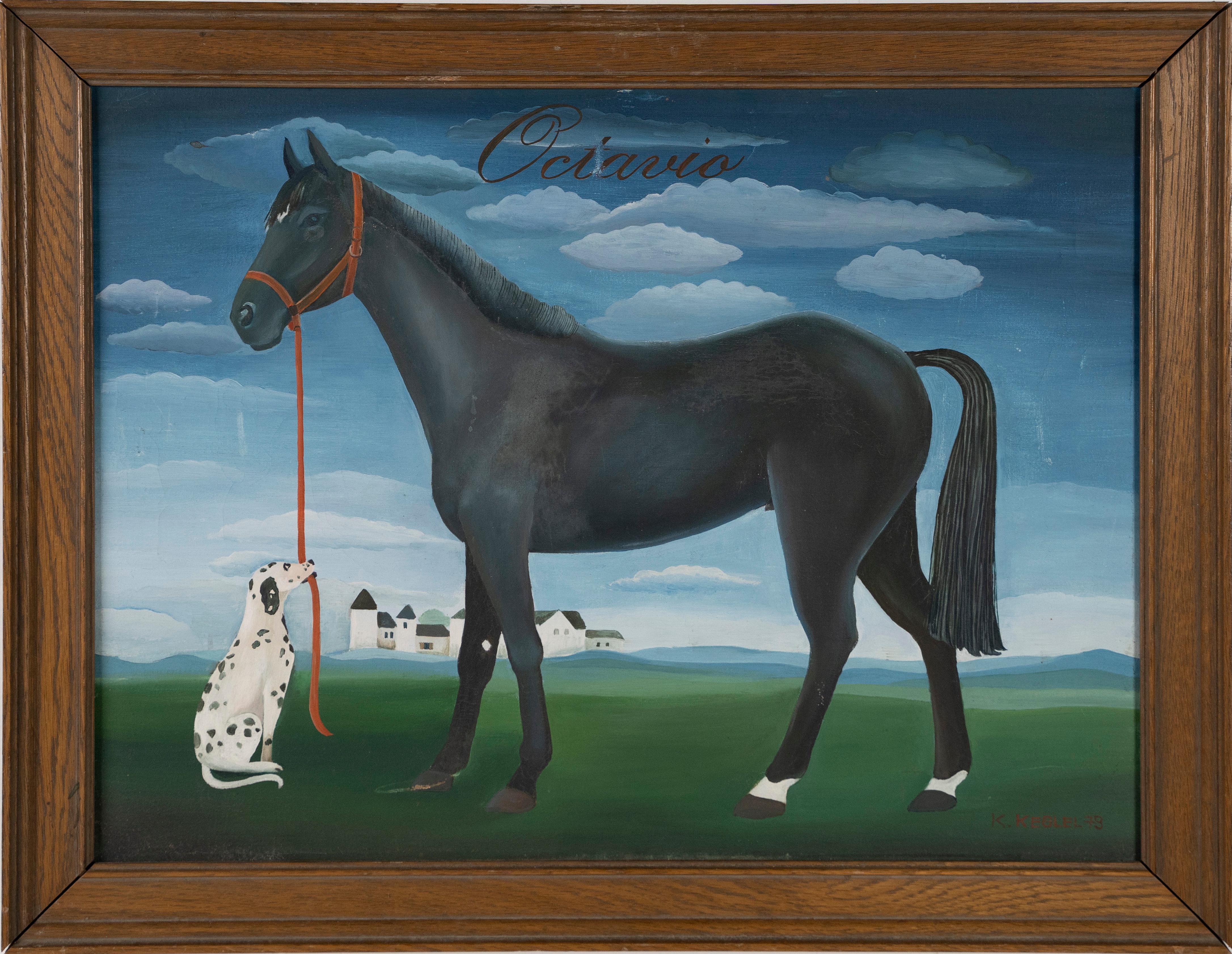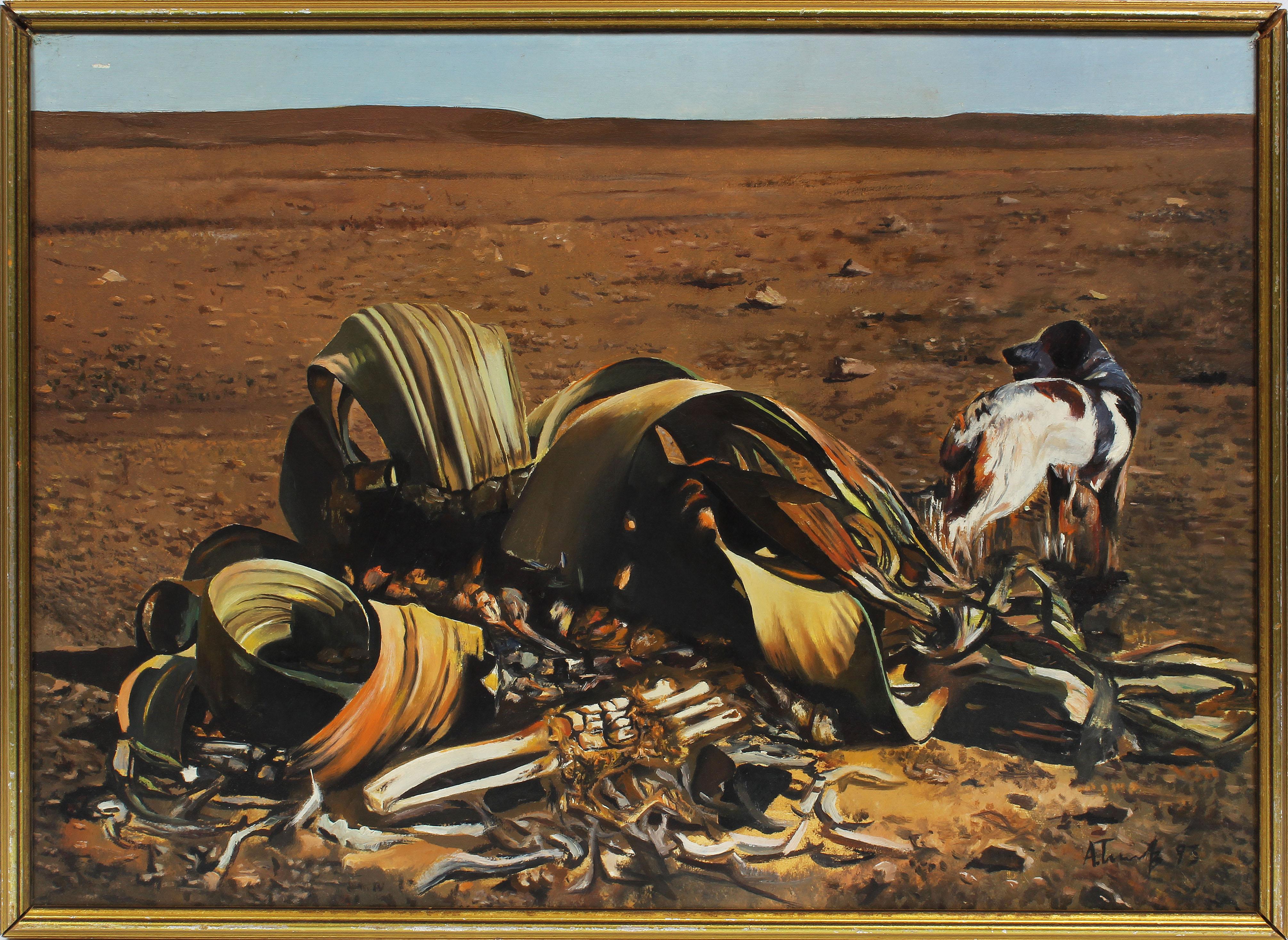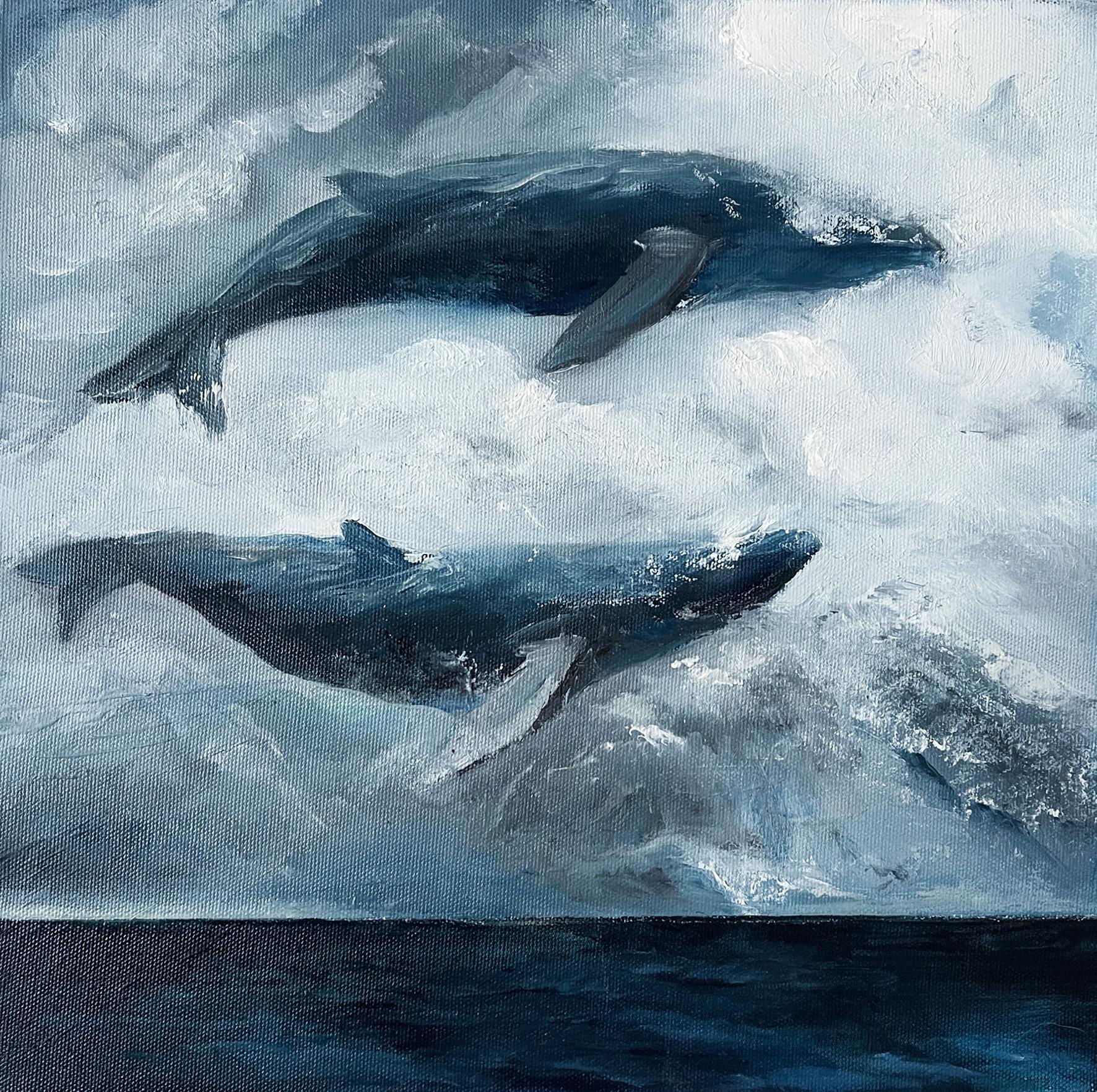Items Similar to The Night of the Ram - Desolate Surreal Landscape
Want more images or videos?
Request additional images or videos from the seller
1 of 14
Eugene BermanThe Night of the Ram - Desolate Surreal Landscape 1967
1967
About the Item
A desolate, surreal landscape with a haunting and mysterious outdoor still life featuring Ram's head emerging from the daisies and underbrush. Classical statues sit on the horizon line while a sunset faint orange ball pokes his face out.
Initialed and dated 1967 - 68 in the artist's monogram.
Signed on verso and titled. Night of the Ram. Exhibited at the New York Cultural Center " Leonid and His Friends" Richard K. Larcada Gallery, NY, Christie's
- Creator:Eugene Berman (1899 - 1972, Russian)
- Creation Year:1967
- Dimensions:Height: 29.5 in (74.93 cm)Width: 43.5 in (110.49 cm)
- Medium:
- Movement & Style:
- Period:
- Condition:
- Gallery Location:Miami, FL
- Reference Number:1stDibs: LU38538715152
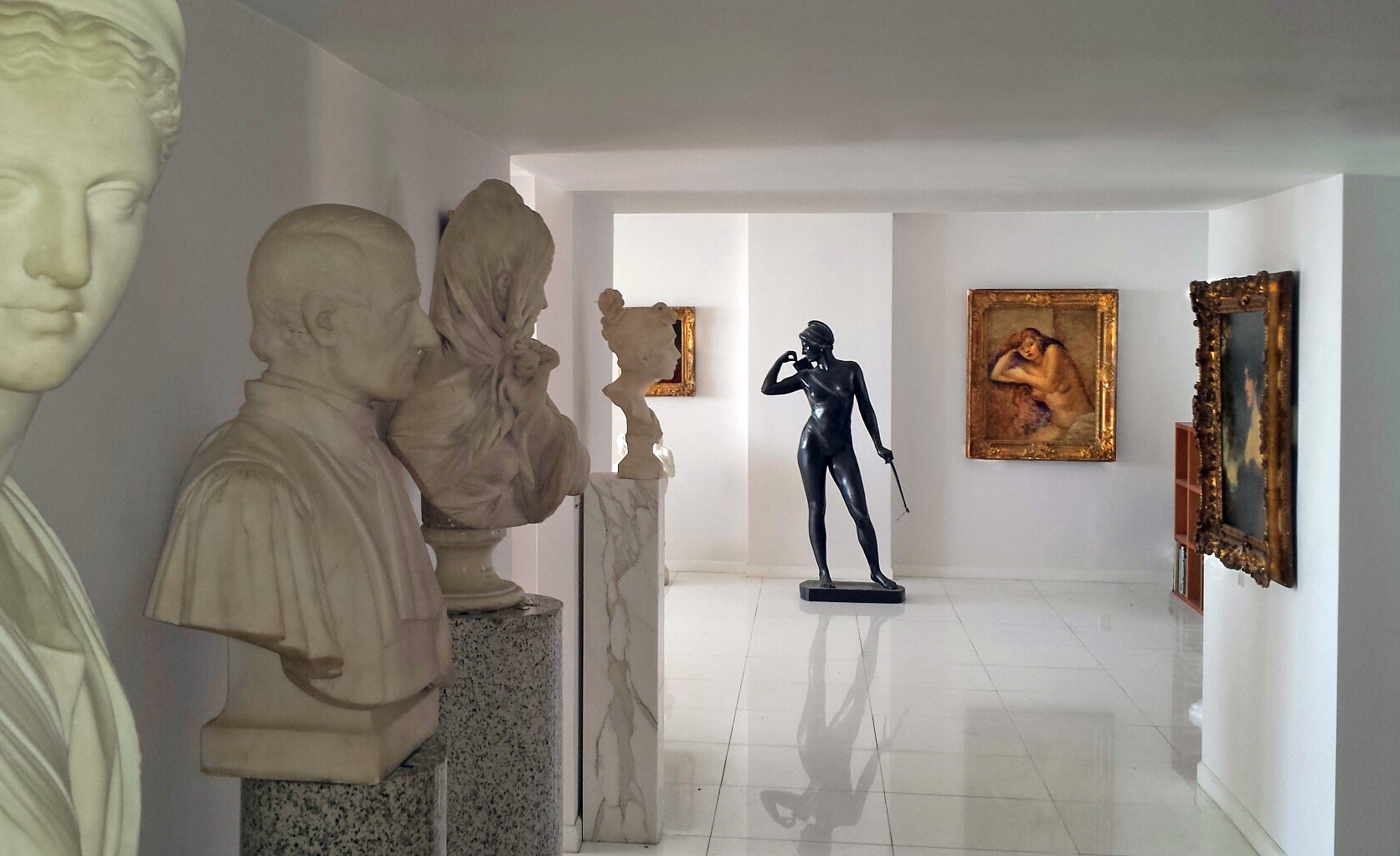
About the Seller
4.9
Platinum Seller
These expertly vetted sellers are 1stDibs' most experienced sellers and are rated highest by our customers.
Established in 2005
1stDibs seller since 2016
102 sales on 1stDibs
Typical response time: 1 hour
- ShippingRetrieving quote...Ships From: Miami, FL
- Return PolicyA return for this item may be initiated within 3 days of delivery.
More From This SellerView All
- Astrology Fantasy - "A Love by the Stars" - Sci-Fi Alignment of the PlanetsLocated in Miami, FLHane paints a dreamy fusion of earthy and celestial bodies with circling birds around a central vertical axis. Created on assignment for De Beers' highly published A Diamond is Forever" campaign. "A love by the stars was important. Until the right man of the wrong sign put his star on my finger. And I entered his house with my love. The artist created the painting to be the night ... so it appears a little dark in natural light. Best viewed with a top and key light to bring out the colors. Hane painted the covers of the Collier-Macmillan editions of C.S. Lewis's Chronicles of Narnia books, as well as such Simon & Schuster publications as Carlos Castaneda's The Teachings of Don Juan and A Separate Reality. In 1963, Hane was hired to do a full-page illustration for Esquire magazine; he moved to New York in 1965. He married Elaine Miller...Category
1970s Surrealist Landscape Paintings
MaterialsCotton Canvas, Acrylic
- Silent Paradise - Leopards, Zebras, Panther and HippoBy Gustavo NovoaLocated in Miami, FLLeopards, Zebras, Panther and Hippo calmly lounge in a tropical paradise surrounded by lush foliage and flowers at the edge of azure blue water. Signed lower right. Signed and dated on verso Provenance: Private Collection Condition: Excellent, Unframed. Chilean-born Gustavo Novoa became represented exclusively by the Wally Findlay Galleries...Category
2010s Surrealist Landscape Paintings
MaterialsCanvas, Acrylic
- Le Paradis - Paradise, Topical Verdant Fantasy Landscape with Flamingos EgretsBy Henri-Robert BresilLocated in Miami, FLParadise was found and it's in the mind's eye of Haitian painter Henri-Robert Bresil. His stylized renditions of a verdant world populated by birds of Paradise... Pink Flamingos and...Category
1990s Surrealist Landscape Paintings
MaterialsCanvas, Acrylic
- The Great BirdBy Frederick HauckeLocated in Miami, FLFrederick Haucke creates his own brand of surrealism in the 1941 stunner that was with the famous Perls gallery. The painting is signed lower right Signed and dated verso Verso with Perls Gallery, New York label. work is in original framed Provenance: Millicent Rogers...Category
1940s Surrealist Animal Paintings
MaterialsMasonite, Oil
- Three Bucks in the Fontainebleu ForestBy Rosa BonheurLocated in Miami, FLRosa Bonheur was the most famous female artist of the 19th Century. We are grateful to Annie-Paule Quinsac for confirming the authenticity of this painting. The work is best viewed with top gallery light to bring out colors ____________________________________________ Rosa Bonheur: Three Bucks in the Fontainebleau Forest, erroneously Stags or Monarchs in the forest Oil on canvas, 29 x 24 inches [74 x 61cm], signed and dated lower left, Rosa Bonheur 1886 The discovery of this painting, a reinterpretation of Bonheur’s most iconic work Le roi de la Foret, [Monarch in the forest]is a significant event in the artist’s scholarship. In forty years of study, I was not aware of its existence and did not find any reproduction of it throughout my extensive reading. Bought by the present owner at the Stamford Winter Auction in 2008, it had been the property of a certain Captain [ name illegible] until January 29, 1920, or from that date {?}. The label on the back of the canvas reads: “Collection of Captain J.H.Gaucis Jan.29,1920”. [the handwriting on the label is extremely unusual; my deciphering of it induces me to propose this last name, Latvian in origin] […] This work could not have been offered among the 95 paintings that compose the catalog section titled “Stags, Hinds, Roebucks,” [ NN.320-415] in the catalog of the Rosa Bonheur Posthumous Sale organized by the Galerie Georges Petit in Paris, which included over two thousand pieces kept in the studio and not sold during her life time : it does not correspond to any of the description or measurements given in these catalog entries. The number 5527inscribed in red on the back of the canvas could refer to the painting having be handled by the Knoedler Galerie, Paris and New York, which after Bonheur’s death, that of Ernest Gambart (1814-1902and George Petit, (1856-1920) was instrumental in the continued diffusion of her work in the US, maintaining her prices that had crashed elsewhere in Europe. Despite difficulties in tracing the provenance history, the attribution to Rosa Bonheur, cannot be denied. Stylistic and iconographic characters are typical of her expressive means in the late 80’s. Also, it cannot be questioned that the calligraphy of signature and date is hers. The work depicts three male deers- or bucks- of different age, in a trail, deep in the forest at twilight, just after sunset toward the end of Fall. The two big ones, have stopped in their track, facing the beholder frontally; the small one, in profile, seems ready to move in another direction. The umbrella term deer, or the more specific one buck {male deer} could both be used as title to this painting, rather than stag, which implies an old majestic senior male deer, considered the King of the forest also called Monarch. In the Cervidae family, the number of points of a deer’s antler is one of the indicators of age, along with body mass and overall size. In our painting, the most prominent stag is massive and has a twelve points antler – qualifying as Monarch. The one immediately behind him exhibits an eight points antler and appears strong and imposing as well does not possess but not his companion’s poise. It is a mature stag. The last one, slender, shoulders not quite muscular yet, with barely six points to his antler, could not be more than two years old. The intensity of expression of the two older stags and their presence in the landscape which is rendered as their stage, are characteristic of Bonheur’s rapport to animals and nature. The painting’s varnish has deteriorated and forms a film that will need to be removed through a cautious cleaning. It is particularly important that the transparent haze that evokes the humidity of the forest at that crucial moment of the light be preserved. It contributes to the painting vibrance. Since 1860, when Rosa Bonheur moved to the Chateau of By, which she had bought with her companion Nathalie Micas, the Fontainebleau Forest which was at a stone through of her property, became ground of studies and the Cervidae a common subject. By then, she would already sketch en plein air, and months or years later, create paintings from start to finish in the studio using the visual material collected while walking through nature or observing animal in their milieu. Her first image of the Great Monarch in the forest, represented frontally and in a similar forest background is the 1868 painting Le cerf de Saint Hubert [Hubertus’ Stag], an illustration of the legend of Saint Hubertus in which she included a cross between the stag’s antlers. As the story as it, Hubertus was a passionate hunter and would often forget his religious duties to go hunting. On a certain Sunday in the depth of a forest, where he had ventured alone, he began to pursue a stag The animal faced him and while a cross appeared between his antlers, the voice of God was heard, directing him to repent ad respect all animals. Rosa Bonheur was herself a hunter but also a spiritualist, influenced by the Saint Simonian creeds and by spiritism. She believed that certain animals had a soul. I personally think that magnificent monarchs and the St Hubertus...Category
1880s Academic Animal Paintings
MaterialsCanvas, Oil
- Alaskan Husky Dogs - The Howl of the Malamute - Men's Adventure StoryBy Dan ContentLocated in Miami, FLDaniel Content painted in the grand tradition of the Golden Age of Illustration, in the style of Dean Cornwell, N.C. Wyeth, J.C Leyendecker ...Category
1930s American Impressionist Animal Paintings
MaterialsOil, Canvas
You May Also Like
- Blue DreamLocated in Bogotá, BogotáImmerse yourself in a unique visual experience with this oil painting in shades of blue and violet. The artwork features enigmatic figures of men and animals coming to life in a noct...Category
2010s Surrealist Animal Paintings
MaterialsPastel, Oil, Cotton Canvas
- Large Scale Surrealist Oil on Canvas, 'At the Watering Hole'.Located in Cotignac, FRLarge late 20th century oil on canvas of animals at the watering hole by British artist Derek Carruthers. Signed to the bottom right. A magical, highly colourful and energetic paint...Category
Late 20th Century Surrealist Animal Paintings
MaterialsOil, Canvas
- Antique American Surreal Landscape Dog & Horse Animal Portrait Rare Oil PaintingLocated in Buffalo, NYVintage American modernist surreal landscape dog and horse portrait painting. Oil on canvas, circa 1976. Signed. Framed. Image size, 19"L x...Category
1960s Surrealist Landscape Paintings
MaterialsCanvas, Oil
- Signed Surreal Southwest Modernist Desert Cactus Original Vintage Oil PaintingLocated in Buffalo, NYVintage American modernist surreal landscape oil painting. Oil on canvas, circa 1940. Signed. Unframed. Image size, 28"L x 20"H.Category
1950s Surrealist Landscape Paintings
MaterialsCanvas, Oil
- Vintage Surreal Trompe L'Oeil Dog Landscape Signed Original Oil PaintingLocated in Buffalo, NYVintage Bulgarian modernist landscape oil painting by Alexander Titorenkov. Oil on canvas, circa 1993. Signed. Displayed in a period frame. Ima...Category
1990s Surrealist Landscape Paintings
MaterialsCanvas, Oil
- "Heavenly ocean" whales in the sky, seascape, sky, clouds, storm, rainLocated in Sempach, LUOriginal painting by Lesia Danilina. Oil on canvas. Oil painting on canvas "Heavenly ocean" about whales in the sky from the series «Fundamentality of the ocean». Water has many ima...Category
2010s Surrealist Landscape Paintings
MaterialsCanvas, Oil
Recently Viewed
View AllMore Ways To Browse
The Night
Ram Vintage
Statue From New York
Rams In Art
Daisy Line
Ram Animal
Vintage Daisy Painting
Orange Statue
Paintings Of Rams
Oil Painting Still Life Daisies
Surrealist Ball
Eugene Ball
Rams Head Statue
17th Painting Bird
17th Century Painting Birds
Pet Portrait
19th Century Paintings Of Dogs
Yellow Horse Painting
